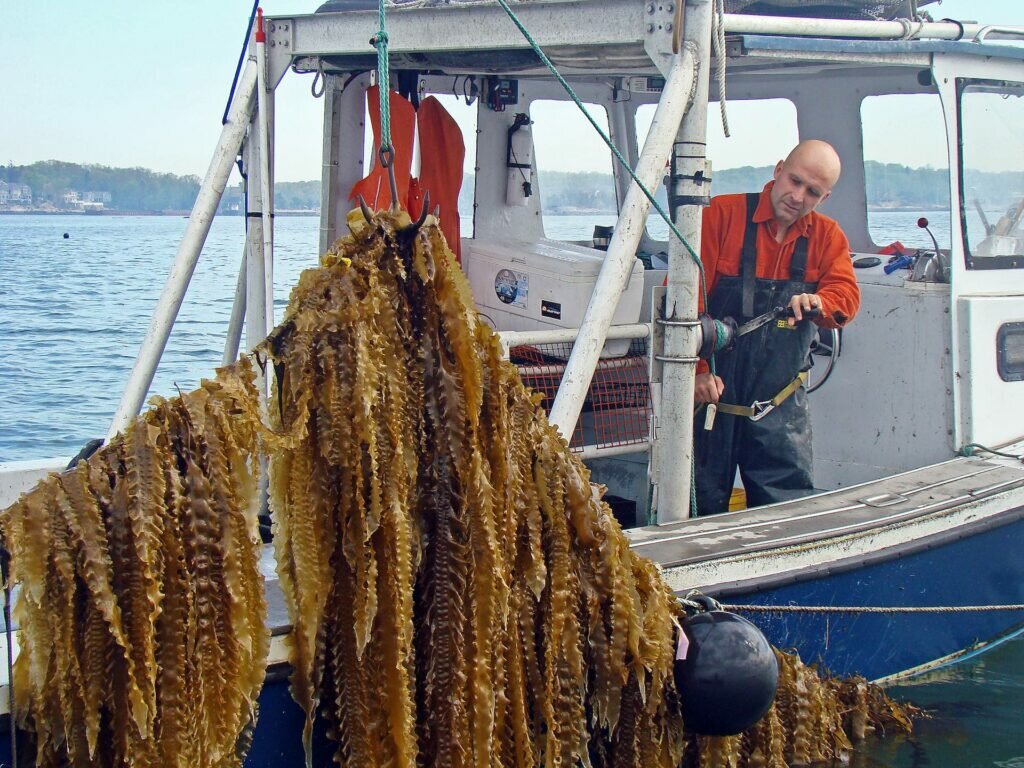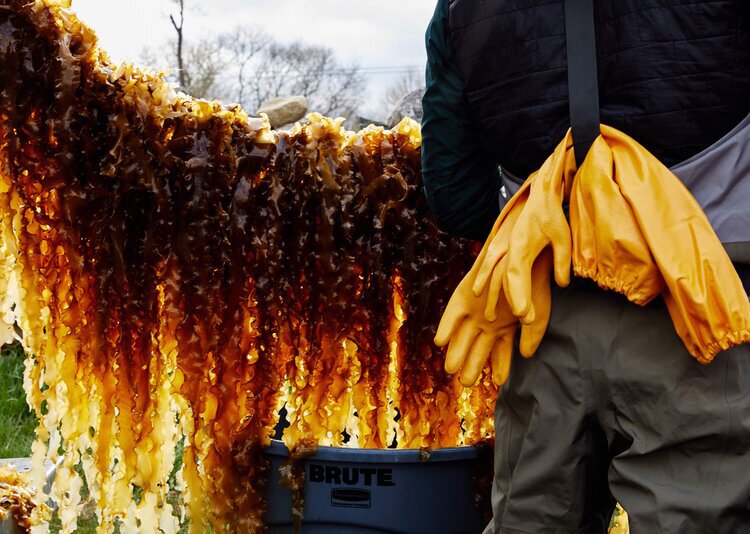The Initiative: A user-friendly model for circular ocean farming
GreenWave works to restore marine health and create new job opportunities through regenerative ocean farming of seaweed and shellfish. The organization has developed a model for ocean farming that does not require fertilizers, feed or fresh water, and can be implemented on both small and large scales. The model benefits the surrounding natural ecosystem while also producing seaweed and shellfish that can be used for multiple purposes, from food to fertilizers – making it one of the most sustainable forms of food production on the planet.
These farms sit vertically below the surface, producing high yields with a small footprint, and the model is replicable at fairly low costs. A conservative estimate, based on farms in GreenWave’s network, indicates that a 20-acre farm can produce 60 tons of kelp and 90 tons of shellfish annually. This corresponds to a net value of more than 100,000 USD and has the potential to sequester 10 tons of CO2 and 30 tons of nitrogen a year.
GreenWave employs a “Regenerative Reef” model which is allowed to evolve at its own pace in each new region. A reef includes 25 regenerative ocean farms, a land-based hatchery and processing hub, and a ring of institutional buyers and entrepreneurs developing value-added products.
The organization works to replicate their farming model throughout North America, ensuring that farmers can make a living and that coastal communities have the tools and resources they need to be flexible in the face of climate change and other forms of environmental, social, and economic turbulence. To date, more than 6,000 prospective ocean farmers from every coastal state in the United States and 100 countries around the globe have requested help, proving the growing interest for circular and regenerative aquaculture systems.
GreenWave has set a 10-year goal to support 10,000 ocean farmers and catalyze the planting of one million acres of regenerative ocean farms. Its primary audiences include Indigenous groups and fishing communities directly impacted by climate change.


